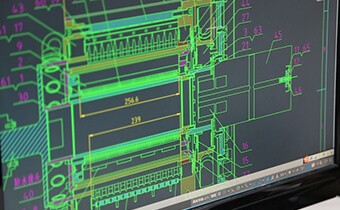After decades of development, Hangzhou Grand Technology had nearly 5000+ 3D slip ring models. Many of them can be directly used or slightly modified to meet customers’ special needs. Of course, we can also create a new design to meet any requirements. So, is there some guide on how to specify a slip ring? Let’s see what follows.
Installation Space
The structure of an electrical slip ring depends on the available space in the device system, and the maximum space determines the installation size. The size of the electrical slip ring must be envisaged at the early stage of design and comply with relevant electrical specifications.

Installation Mode
The customer needs to inform whether there is a central shaft or whether there are additional hydraulic pipelines, pneumatic pipelines, and rotating joints that need integrated into the transmission. In addition, the slip ring cannot be loaded, and there should be a reliable load-bearing support structure in the device system.
Electrical Parameters
The signal type, current, and transmission efficiency to be transmitted shall be clear. If only 10 amps of current is required, it is not necessary to select 20 amps configuration. The manufacturer can make conservative calculations and rate all channels, which will help to achieve the most cost-effective model. Under necessary conditions, surge protection can be adopted for the power supply.
For signals, different transmission protocols also have a great impact on the transmission effect. There are significant differences between the USB 2.0 protocol and the USB 3.0 protocol. If misused, the result is not packet loss, but whether it can be transmitted.

Mechanical Parameters
The working speed rpm is an important design parameter. The speed required for ordinary slip rings is generally below 250 rpm. The rotational speed determines the internal structure, manufacturing process, and material selection.
The overall rotational life and whether it operates under harsh conditions will determine the grade of the slip ring. The above are some basic design requirements, which can help to provide a general idea to customers for evaluation.
See What We Can Do

